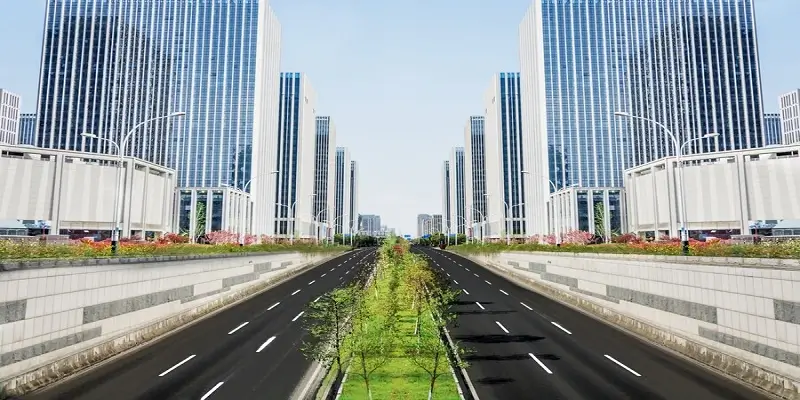
Mexico is a historically and culturally rich country and this is reflected in its infrastructure. Mexico has a lot to offer everyone, with both historic antiquities and contemporary highways. Mexico currently has the most advanced infrastructure in all of Latin America as significant infrastructure investments made by the government.
The nation of Mexico is proud of its infrastructure. The nation's progress and development are reflected in its contemporary infrastructure. Mexico has a promising future, and infrastructure will certainly have a significant role in it.
Follow us, to have insights into a diverse and evolving Mexico infrastructure to understand its role in shaping the country's future.
Categories of Mexico's infrastructure
Mexico's infrastructure may be widely divided into the following classes:
Transportation
Mexico has an extensive network of roads, highways, railroads, airports, and ports. The country has one of the busiest airports in Latin America and one of the largest highway networks in the world. High-speed rail is also expanding in Mexico, linking business hubs and important industrial cities.
Energy
Mexico has a massive energy sector, which includes oil, gas, electricity and renewable power. The country is a major exporter of oil and gas and is investing heavily in renewable energy such as solar and wind power.
Telecommunications
The country’s modern telecommunications infrastructure offers millions of Mexicans with high-speed Internet and cell phone services. The country has several data centers and other telecom infrastructure.
Water and sanitation
Mexico has a huge and well-maintained water and sanitation system that provides clean water and sanitation services to most residents. However, there are still a few challenges in this sector, particularly in rural areas.
Recent investments in Mexico's infrastructure
In recent years, the Mexican government has invested heavily in infrastructure. Some of the important Mexican projects that have been finished or are currently underway in Mexico include:
-
Felipe Angeles International Airport
The new airport is located outside of Mexico City and is anticipated to be one of the largest in the world. As of 2023, seven airlines are using the airport, and have an initial capacity of 20 million passengers.
-
Train Maya
This new railroad will connect the Yucatan Peninsula with the rest of Mexico. It is predicted to be one of the longest passenger trains in the world.
-
The Trans-Isthmus Corridor
This new transportation route will connect the Gulf of Mexico with the Pacific Ocean. Shipping time and overall costs between Asia and North America are predicted to decrease.
Impact of Mexico’s Infrastructure on the Economy
Mexico’s infrastructure positively influences the economic system within the following approaches.
Job creation
The infrastructure sector gives jobs inside the construction and operations sector. For example, the construction of Felipe Angeles International Airport is expected to create more than one hundred and sixty thousand (160,000) jobs.
Economic Improvement
Infrastructure investment boosts monetary growth by increasing demand for services and goods. For example, the Mexican government authorities estimate that the Tren Maya railway will generate more than $15 billion in monetary benefits over the next 30 years.
Poverty reduction
Investment in infrastructure helps to reduce poverty by creating jobs and improving access to necessary services. For example, the extension of rural roads linked farmers with markets and improved their incomes.
Current Trends and Future Plans of Interest
Mexico is investing heavily in infrastructure, especially in public-private partnerships, connectivity, green infrastructure, and sustainability.
-
Public-Private Partnerships (PPPs)
PPPs are joint agreements between the government and the private sector to finance, design, implement, and execute infrastructure tasks. PPPs have come to be the desired model in Mexico, particularly in the hydropower sector.
-
Connectivity
Mexico is increasing its network of highways and roads to enhance communications and facilitate mutual trade between cities. It is also modernizing its ports and investing in rail and air infrastructure.
-
Green Infrastructure
Mexico practices sustainability measures and environmental regulation and emphasizes the promotion of sustainability through the use of environmentally friendly materials in construction and production, and the integration of green areas into urban spaces.
-
Resilience to natural disasters
Mexico is at risk of natural disasters such as earthquakes and hurricanes. The state can invest in infrastructure to better cope with these challenges, keeping residents safe.
-
Smart Cities and Urban Development
Mexico is promoting the development of smart cities that incorporate sustainable technologies and practices to enhance the lives of urban area residents. This includes projects within the areas of mobility, energy efficiency, and digital services.
-
Cross-border services
Mexico's proximity to the United States makes cross-border infrastructure vital. Cross-border initiatives such as bridges and buying facilities are expected to be highlighted.
-
Tourism Infrastructure
Mexico's tourism industry is a critical part of the financial system. Investment in infrastructure associated with resorts, hotels, and tourist attractions can retain to attract tourists.
Challenges to Mexico's Infrastructure Development
Mexico faces a number of challenges and demanding situations in its infrastructure development efforts, along with:
-
Geographic diversity
Mexico's huge size and geographic diversity make it hard and highly priced to build and maintain infrastructure in all parts of the country.
-
High rate of urbanization
Mexico's cities are growing rapidly, and the government is struggling to keep up with the demand for infrastructure services.
-
Limited budget
The Mexican government has a restricted budget for infrastructure investment, which means that it needs to prioritize carefully and leverage private sector investment.
-
Corruption
Corruption can add to the costs and delays of infrastructure projects and initiatives.
As Mexico continues to build, innovate, and invest in its infrastructure, the potential for growth and development is endless. With a commitment to sustainable solutions, connectivity, and resilience, the future of Mexican business is promising. As a part of our commitment to Mexico's growth, SIXM is proud to offer specialized Mexico Manufacturing Consulting Services. Together we plan for tomorrow.

